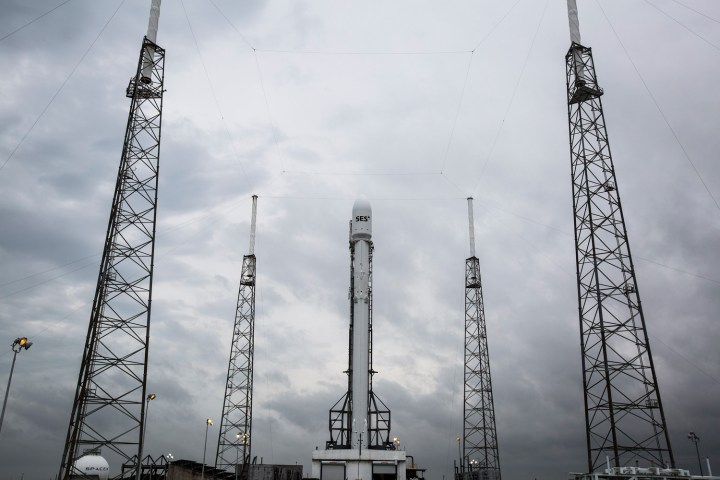
“We’re anticipating getting back to flight, being down for about three months, and getting back to flight in November,” said Shotwell, in a video recorded by Andreas Menn of German business magazine WirtschaftsWoche. That said, Shotwell did admit that three months would be the minimum amount of time needed for SpaceX to recover, so it’s possible that we’re looking at a longer grounding time for the ambitious company.
Regardless of timing, however, one thing’s certain — liftoff will not take place at Launch Complex 40, where the Falcon 9 met its fiery end. That particular site was seriously damaged by the explosion, and likely will not be able to accommodate a launch by November. There is, however, a new launch pad located at NASA’s Kennedy Space Center in Florida known as Launch Complex 39A. This one ought to be liftoff ready by November, and capable of supporting launches of the current Falcon 9 and the upcoming Falcon Heavy.
This powerful upcoming rocket was meant to carry out its maiden demo mission in the latter part of 2016, but the recent explosion (which Elon Musk still cannot explain), has pushed it back. Now, it looks as though the Falcon Heavy will make its launch debut in the first quarter of 2017. It’s the latest in a string of delays that have plagued the Heavy.
So stay tuned, space fans. There will definitely be activity coming out of SpaceX at some point — it’s just unclear as of yet just how soon (or from where) that activity will be.
Editors' Recommendations
- Watch SpaceX fire Starship’s Raptor engines ahead of 4th test flight
- SpaceX Starlink internet heads to first cruise ships
- Watch SpaceX’s Crew Dragon thrusters guide it to space station
- SpaceX Crew-4 astronauts are on their way to the space station
- How to watch SpaceX Crew-4 astronauts launch to ISS


